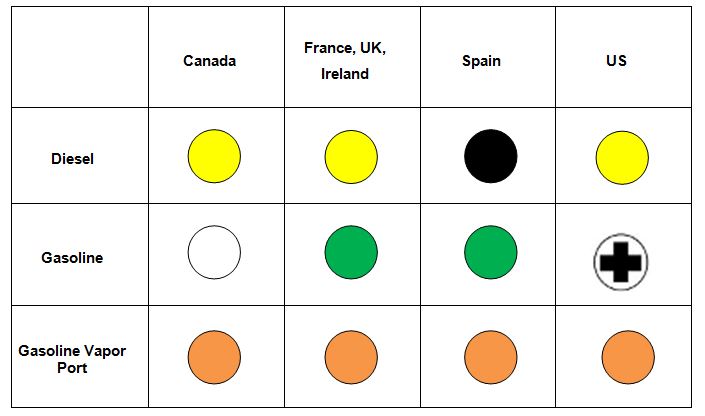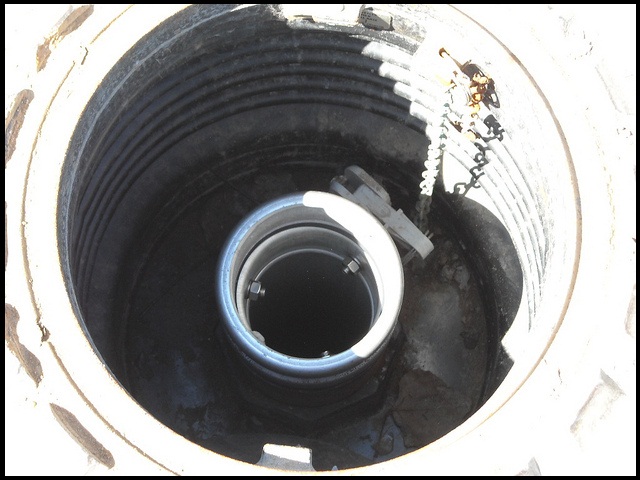Title Page
-
Monthly Environmental Visual Inspection
-
Location/Facility
-
Month of inspection
-
Conducted on
-
Name of person completing inspection
Branch Information
-
Select date
-
- EWR - On Site
- EWR- QTA / Service Center
- JFK - National
- JFK - Enterprise
- HPN - QTA
- ALB - QTA
- LGA - Rikers
- LGA - Natioanl
- LGA - enterprise
- BTV - All Brands
Section 1: Administrative
-
Is there is a properly trained Class A, B and C operator assigned to this location?
-
Please have designated employees complete the Class A, B or C training. Training documents and tests can be found on the Group Environmental Management Hub page (https://hub.ehi.com/docs/DOC-43590)
In addition, please ensure the Group Environmental Organizational Structure is kept up to date by providing a copy of the org chart to corporate EHS as people change. -
Review your compliance dashboard on Titan for past due deadlines. Select "yes" if there are no past due deadlines on the dashboard?
-
Click on the compliance activity in the Titan dashboard to get more details and send supporting documents to eracefiles@titancloud.com in order to close the action.
-
Is the list of tanks and their status on Titan is correct?
-
Send updated tank information to the EHS department.
-
Are daily visual inspections being maintained onsite?
-
Take a photo of the completed daily visual inspections.
-
Please use the new daily inspection form created in 2016 and rolled out in the new environmental training. Copies can be found on the Hub (https://hub.ehi.com/docs/DOC-35090).
-
Are the weekly visual inspections being maintained onsite?
-
Take a photo of the completed weekly visual inspections.
-
Please use the new weekly inspection form created in 2016 and rolled out in the new environmental training. Copies can be found on the Hub (https://hub.ehi.com/docs/DOC-36324).
-
Is the Automatic Tank Gauge (ATG) Quick Reference Card posted near the ATG?
-
A copy of the most up-to-date Automatic Tank Gauge (ATG) Quick Reference Card can be found on the Hub (https://hub.ehi.com/docs/DOC-33454)
-
Select "yes" if the Automatic Tank Gauge (ATG) is free from any alarms?
-
Use the ATG Quick Reference Guide to determine what the alarm is and then take the proper next step and notifications.
-
Is a copy of the tank permit posted (if required) and stored in Titan?
-
If tank permit is not posted, please ensure an updated copy is posted.
If tank permit is not stored in Titan, please send a copy to eracefiles@titancloud.com. -
Do you have a UST at your location?
-
Has a State Required Class A, B, and C operator been designated and trained?<br>- In NY - a Class A, B, or C operator must be onsite while the UST is in use.<br>- In NYC - in addition to the State training, a certificate of fitness must also be onsite. <br>- In NJ - a Class A, B, or C operator must be onsite while the UST is in use.
-
Guidance and details on each State's specific training can be found on the UST Operator Training Unique State Requirements Hub page (https://hub.ehi.com/docs/DOC-154483).
-
Are waste manifests, bill of lading or other shipping documents being retained?
-
Ensure manifests, bill of lading or other shipping documents are being retained and are easily accessible. If you have questions on any of the forms please reach out to your EHS Department contact.
Paperwork
-
Branch
-
Is State of NY Petroleum Permit posted and unexpired?
-
Take photo of State of NY Petroleum Permit
-
Post permit
-
Is FDNY Permit posted and not expired?
-
Take photo of State of FDNY Permint
-
Post permit
-
Is NYC certificate of fitness posted for current management team employees?
-
Take photo of NYC certificate of fitness.
-
Get certificates posted.
-
Is an employee with a certificate of fitness present when fuel is being dispensed?
-
Ensure that an employee with a certificate of fitness is present when fuel is being dispensed.
Section 2: Above ground fuel or oil tanks and mobile defuelers
-
Is the facility implementing good housekeeping practices? (i.e. tank area clean with no evidence of any leaks or spills)?
-
Is the written emergency response plan easily accessible? <br>Note, a copy of the Emergency Response Plan should be posted in each area storing hazardous liquid or solids (i.e. service center, fuel pumps, AST/UST, etc.)
-
A copy of most recent version can be found on the Hub (https://hub.ehi.com/docs/DOC-327789).
-
Are all waste drums or tanks properly labeled with their contents?
-
All labeling requirements can be found on the Hub (https://hub.ehi.com/community/environmental_compliance) or reach our to your Corporate EHS contact.
-
Are spill kits located in areas where spills may occur (i.e., next to tanks, drums, defueling areas)? Note, if you have a SPCC Plan it will indicate where spill kits are required to be.
-
More detailed guidance on spill kits and ordering them can be found on the Spill Kits Hub page (https://hub.ehi.com/docs/DOC-93893). In addition, if you have a SPCC Plan review it to determine where spill kits are required to be located.
-
Are spill kits properly stocked?
-
Take a photo of the inside of each spill kit.
-
Order additional supplies for the spill kit. Reordering information should be included in the spill kit however, if not please visit the Spill kits Hub page for additional information (https://hub.ehi.com/docs/DOC-93893).
-
Do you have any above ground fuel or oil tanks or mobile defulers onsite?
-
Are the tanks properly labeled?
-
In general, tank should be labeled with the following:
Tank #, if applicable
No Smoking
Product/Contents
Capacity
NFPA Placards
Fill Procedures
Emergency Contacts -
Are the fill port closed when not being used?
-
Keeping the fill port closed will help keep liquid, dust, and debris out of the tank.
-
Is the above ground piping free of visible leaks and in good condition?
-
Reach out to your local tank contractor and EHS department to discuss repair options.
-
Is the tank exterior and connections free of visible leaks?
-
Reach out to your local tank contractor and EHS department to discuss repair options.
-
Is the containment (diking or impounding) free of liquid and debris?
-
After it rains, the rainwater should be drained from the secondary containment by opening the drain plug. Emptying the rainwater ensures there is adequate secondary containment space should a leak from the AST or defueler.
If there is a fuel sheen on the water, the fuel should be removed by your hazardous wastes hauler. They will assist you with characterization of the water and proper manifesting/disposal.
If there is no sheen just drain the rainwater onto the ground. -
Take a photo of the dry containment.
-
Is the containment (diking or impounding) drain valve closed?
-
Close the drain valve to ensures there is adequate secondary containment space should a leak from the AST or defueler.
-
Select "yes" if the tank gauge indicate there is NO liquid in the interstitial space of the tank?
-
Contact you tank contractor to remove the liquid and investigate the tank leak.
-
Is the tank audible alarm working properly by pressing the test button, if equipped?
-
Contact you tank contractor to repair the audible alarm to ensure it goes into alarm when the tank is full.
-
Does your facility have a SPCC Plan?
-
is the SPCCC Plan posted?
-
Are all tank surfaces (and paint) in good condition and free from corrosion?
-
Is the concrete pad/foundation in good condition?
-
Is the tank securely bolted to the foundation at all points?
-
Does the tank have adequate vehicle protection?
-
If required, is the grounding cable secure to the tank and ground?
-
Have there been any complaints about the overfill prevention valve during deliveries?
-
Are the primary and emergency vents unrestricted and working property?
-
Has the emergency stop been tested to ensure it is working properly?
-
Are drums present at this site?
-
Are the drums in good condition?
-
Is secondary containment provided for the drums (i.e. spill pallets, building, etc.)?
-
Is the drum area clean with no evidence of spills?
Section 3: Fuel Tank System
-
Does this site have a fuel (gasoline or diesel) system?
-
Are the nozzles properly hung on the dispenser?
-
Are the hoses and nozzles in good condition with no leaks?
-
Contact your local tank contractor to repair or replace the damaged equipment.
-
If there has been a recent “drive off”, is the breakaway free of any leaks?
-
Reach out to your contractor to repair the issue. In addition, consider posting the drive off poster near the dispenser area (https://hub.ehi.com/docs/DOC-258619).
-
Do the under dispenser containment have a fuel leak sensor?
-
If the dispensers DO NOT have fuel leak sensors, open each dispenser. Is the area is dry and free of debris and no signs of leaks?
-
Take a photo of the under dispenser containment.
-
Remove the liquid and/or debris from the sump and reach out to your tank contractor to discuss repair/replacement options.
-
Is proper signage posted such as: “Smoking Prohibited”, “Dispensing Into Unapproved Containers Is Prohibited”, “Vehicles Must Stop During Fueling”?
-
Is the emergency shut off switch easily accessible (i.e. nothing blocking the area)?
Open each sump and inspect
-
Does the site have underground storage tanks and/or underground piping?
-
Do the sumps have fuel leak sensors?
-
Open each sump, Are the underground tank and/or piping sumps dry, free of debris and leaks?
-
Take a photo of the sump.
-
Remove the liquid and/or debris from the sump and reach out to your tank contractor to discuss repair/replacement options.
-
Open each sump, is the sump free of any cracks or holes in the bottom or sides of the sump?
-
Reach out to your tank contractor to discuss repair/replacement options.
Spill Buckets / Spill Box
-
Are the the spill bucket/spill box covers properly color coded? See chart below for country specific.
-
Properly paint the spill bucket/spill box covers.
-
-
Are the fill port and vapor caps free from any damage (i.e. visibly broken) properly secured?
-
Reach out tank contractor to get replacement caps.
-
Is the bucket or box dry and free of debris and liquids?
-
Take photo of the inside of the spill buckets.
-
If you notice just water in your spill bucket(s), pump on the pavement and let it dry. If water continues to leak into your spill bucket, either keep removing it or ask your local tank contractor to fix it.
If water is mixed with fuel, soak it up with an absorbent and place it in properly labeled drum for disposal.
If its just fuel, either soak it up with an absorbent or pull the drain valve to drain into your tank. Please note not all spill buckets have drain valves (see photo below for spill bucket with drain). -
Please print a copy of this inspection and store it onsite with your environmental records.
-
Notify the Class B Operator or supervisor of any issue(s) discovered.
-
Note, items marked as "No" do not indicate non-compliance.








